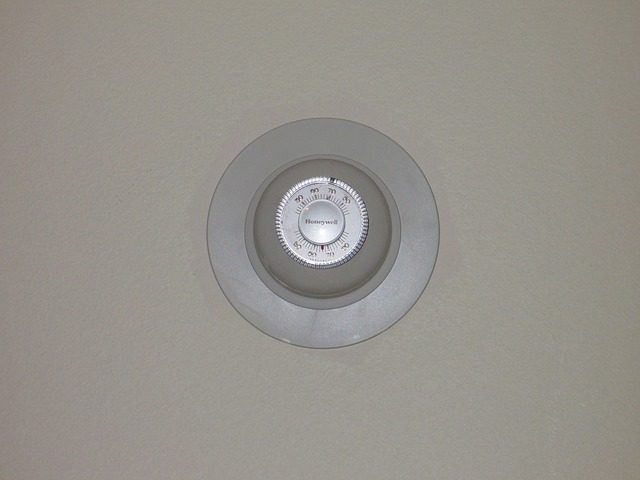Thermostat and Wi-Fi Technology Combine to Enhance Comfort & Efficiency

It should come as no surprise that thermostats have led the way in the revolution in home technology. Over the past two decades, thermostats have progressed from the old-school manual models (turn the dial to the temperature you want) to digital devices (instead of a dial, you click up and down on the digital display) to ultra-modern models that employ adaptive technology to help keep your home comfortable. Wi-Fi technology is an important component of the more versatile programmable thermostats on the market today.
These cutting-edge devices go by various monikers, including Wi-Fi thermostat, smart thermostat and connected thermostat. It all just means that Wi-Fi technology has been incorporated into the thermostat allowing you to monitor, program or adjust the device remotely, with a phone or tablet app or from your laptop. This gives homeowners much greater control over their home environment, when at work, school, out to dinner, on vacation or wherever.
More Info About Your HVAC Operation
Smart/connected/Wi-Fi thermostats also provide homeowner access to detailed information about how their cooling and heating systems are operating. For instance, some will alert the homeowner to overly high humidity in the home or when a furnace filter needs to be replaced. Some models also will incrementally raise or lower temperatures, rather than all at once, which tends to gobble up fuel and place unnecessary stress on equipment. Another “smart” feature of Wi-Fi thermostats alerts the homeowner during periods of high power demand. That way, they will know to reduce electrical usage to avoid high power bills and possible brownouts.
These features are all built on top of the programmability that’s become common with modern thermostats. Programmable thermostats allow the homeowner to set energy-saving temperature changes based on the schedules of family members and other home occupants. A typical weekday program for a programmable thermostat during the heating season would raise and lower the temperature setting based on when home occupants are at work or school, and lower the setting at night when everybody is sleeping. The idea is that when the home is empty, or occupants are sleeping, the temperature doesn’t need to be as warm as when people are active in the house. The same idea applies during the cooling season, except in reverse.
One main distinguishing trait that separates types of programmable thermostats is how many different programs you can set on the device. The most versatile option is the seven-day programmability, which allows you to set a different schedule for temperature changes each day of the week. Other models allow for one weekend program and another weekday program. The most basic programmable thermostats allow just one program that changes the temperatures on the same schedule every day.
Adjust Temperatures Remotely
With Wi-Fi capability, of course, the advantage is that you can change the programming from a remote location on a mobile device or computer, as long as you have an Internet connection.
Here are some ways that a Wi-Fi thermostat can improve your life at home:
• If you realize that grandma plans to spend a winter afternoon at your place making cookies while you’re at work and the kids are at school, just push a few buttons on your phone’s thermostat app, and warm up the place for granny.
• If you learn that the high school is releasing students at noon due to a plumbing emergency, you can ensure that your teens are coming home to a warm house.
• If it’s July and you have to work late at the office, you can adjust your home’s thermostat programming remotely so the AC doesn’t kick on until half an hour before you expect to arrive home.
These are just a few ways that a Wi-Fi programmable thermostat can improve comfort while saving energy in your home.
The Future Is Unlimited
This just scratches the surface of the potential for connected/Wi-Fi/smart thermostats to improve quality of life in the home and office. The U.S. Department of Energy issued a report in 2016 (“Overview of Existing and Future Residential Use Cases for Connected Thermostats”) that looked at other ways that these devices can enhance residential energy efficiency. Opportunities for expanded functions in Wi-Fi thermostats have opened wide due to the increased incidence of communication and sensing assets in residential settings.
Wi-Fi Thermostats’ Super Powers
High-tech thermostats’ main utility continues to be in the area of energy efficiency. Some of the more recent technological advances in this area include the following:
• Energy audits that can be examined remotely.
• Feedback to homeowners on their HVAC systems’ performance, both basic and advanced.
• Constantly optimizing operating of the home’s cooling and heating system.
• After energy-efficiency improvements in the home, measuring and verifying those upgrades.
• Other improvements that increase engagement with homeowners, including their ability to manage home energy and monitor the energy grid.
At the time that the aforementioned Energy Department report was released, it identified crucial gaps in the connected thermostat market that should be addressed. Among those are standardizing data, making it more accessible, and enhancing data privacy. In the intervening years, both private- and public-sector entities likely have addressed many of those gaps.
